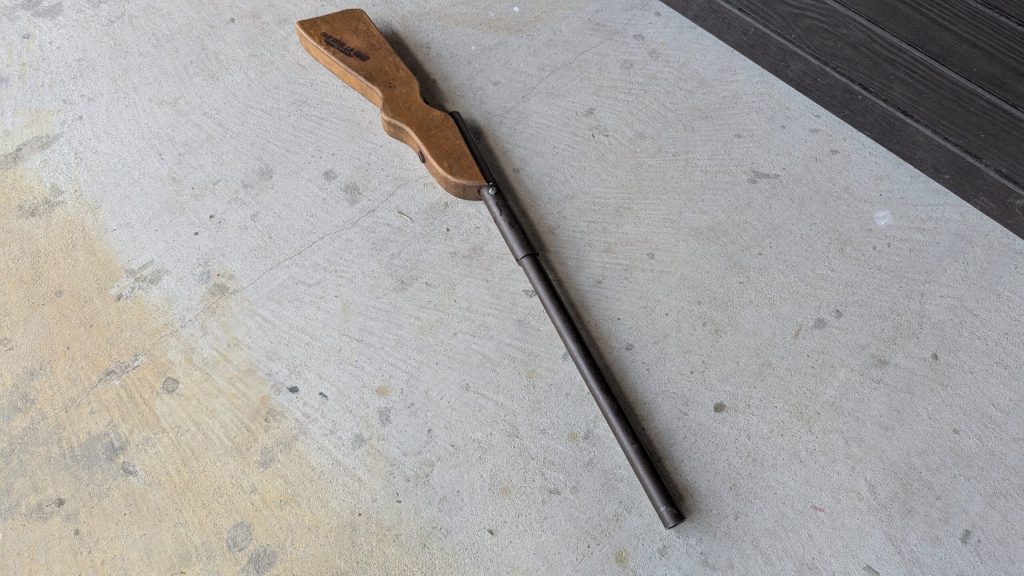Sometimes I buy guns for the story behind them, well, I buy cheap guns for the story. “Story guns” are guns that feature a narrative that’s better than the actual gun itself.
Some story guns are owned by famous people. Others are just intrinsically linked to particular stories. The Richardson M5 Guerilla Gun is a story gun. At first glance, you might think this is a gun I built after going to Home Depot, but this isn’t the case.
The story behind the Guerrilla Gun starts with its maker, Lliff Richardson. Illiff Richardson was a World War II veteran with one of the craziest stories of World War II. Mr. Richardson served as an ensign on a PT Boat, and after engaging a Japanese ship, they headed to Cebu City in the Philippines.
There, his ship was strafed by Japanese planes, and the Japanese invaded the Philippines. To make a long story short, he fled the city with most Americans and would join the Philippine guerrillas. He helped the guerrillas establish a communication network and was able to get General MacArthur to recognize and help support the guerrilla efforts.
His story is insane and fascinating, and you should read the book American Guerrilla. It details his entire story, including his time commissioned in both the Army and Navy, his consecutive awards, four court-martials, and more.
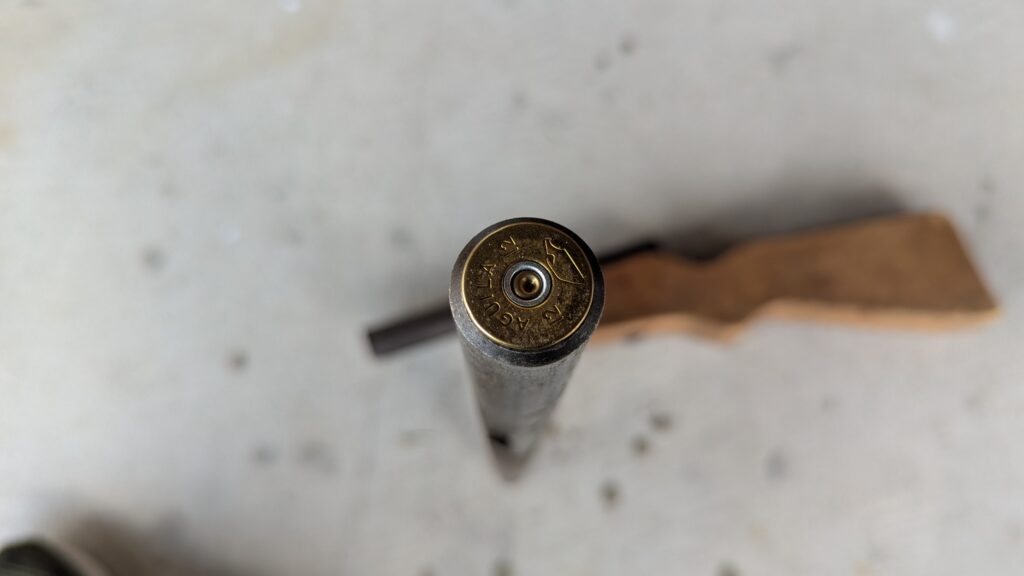
When the war ended, Illiff Richardson had a series of different careers, ranging from technical adviser for Hollywood to manufacturing guns. He manufactured two guns, the Basic and Deluxe models of the gun you see here.
The Guerrilla Gun
The Guerrilla Gun was available in two models: Basic and Deluxe.
What you see here is the Basic model. The Deluxe model featured a forward grip attached to the barrel. It featured a trigger and trigger guard, but the trigger didn’t fire the gun. The trigger simply released the barrel. The Basic model used a nut to restrict barrel movement.
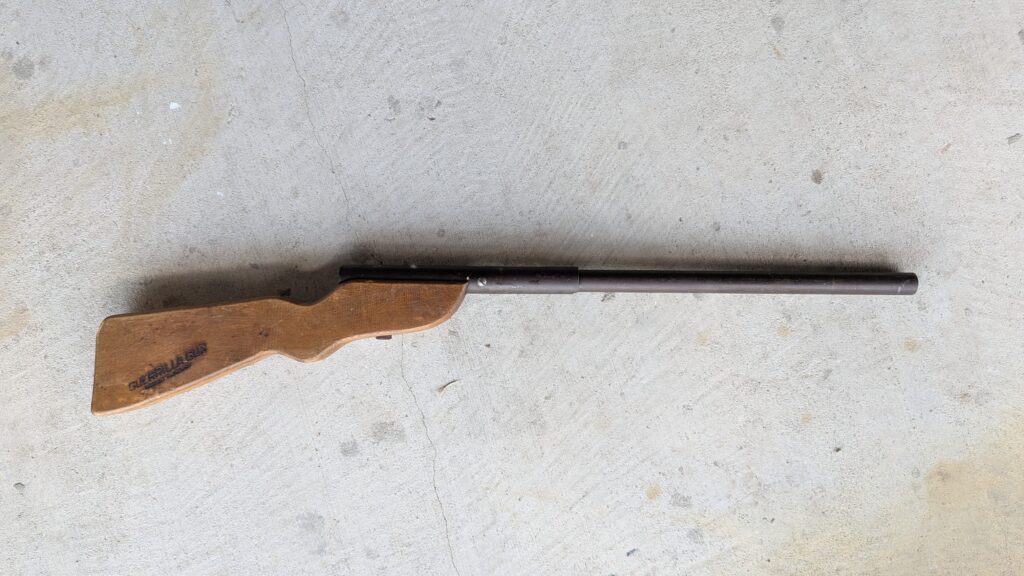
If you look at this thing, it’s pretty easy to figure out how it works. Much like the internet, it’s a series of tubes. The receiver is the slightly bigger tube, and the barrel is slightly smaller. The receiver features a fixed firing pin, and the barrel gives you a chamber. You load a single round into the barrel and slam it rearward to fire the gun.
It’s a basic slam-fire shotgun design. You could build this from Home Depot parts. That’s the point. The shotguns used by Filipino guerrillas inspired Lliff Richardson. These shotguns would be used like Liberators: ambush a soldier, kill him, and take his weapon. These guns were cheap and easy to make, and when the guerrillas were getting supplies from the U.S., shotgun ammo was easy to acquire.
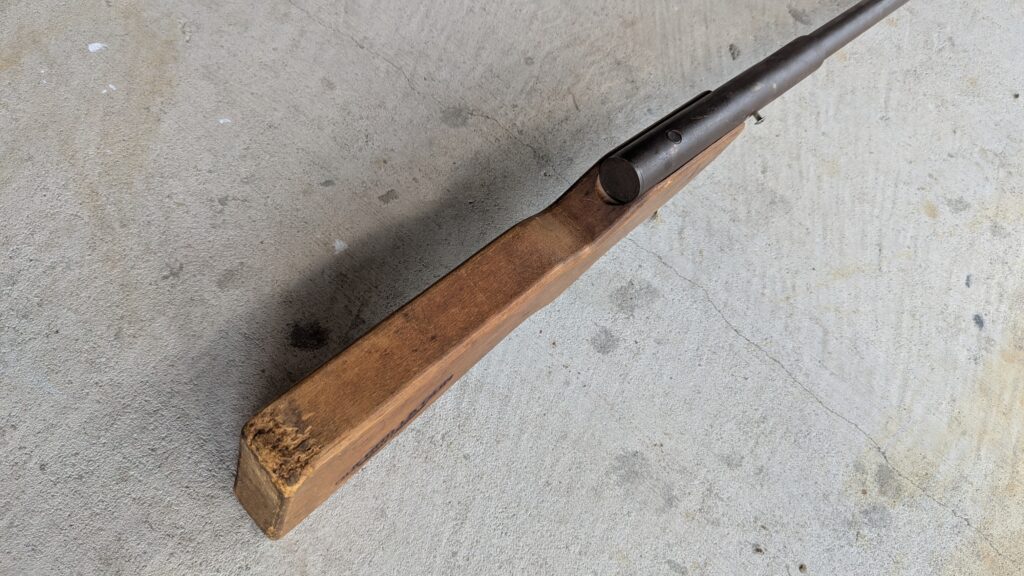
The stock is just a hunk of wood and not much more. I can’t comment on some fancy finish, excellent ergonomics, or the best pattern a shotgun has ever thrown. It’s a dystopian weapon, an improvised gun, and it’s as simple as it gets.
The Basic model of the Guerrilla gun cost seven dollars. Adjusted for inflation, that’s about 115 dollars in 2025 money. It was cheap, but it didn’t draw many customers. The Guerilla guns are rare, but not collectible enough to be valuable.
Shooting the Guerrilla Gun
Confession time. I’m a little nervous to shoot this gun with any kind of full-powered buckshot. The receiver is held to the wood stock with one big bolt, and I don’t know the quality of the metal. When I shoot my Guerrilla Gun, I use birdshot mini shells. If the gun explodes, at least it’s with a novelty birdshot load and not some 00 buckshot.

This isn’t a gun I’d use seriously for anything, although it would be fun to see the looks if I took it to the trap range. I don’t care how it patterns, and that’s great because the answer is not very well. The birdshot pattern from the mini shell is massive at 15 yards. That’s part of the mini shell problem and part of using a pipe for a barrel.
Barrel harmonics are a thing, and I don’t imagine the Guerilla Gun’s moving pipe of a barrel has tight patterning harmonics. The Guerilla Gun came with a bead sight, but somewhere in my gun’s existence, that bead broke off. It’s a point-and-shoot affair now.
Riding the Guerilla Gun
The stock is massive, thick, and you can’t exactly get a good grip around the thing. It’s just a big chunk of wood with “Guerrilla Gun” burned into it. I imagine the wide stock dissipates recoil well since it has more room to dissipate that recoil. Using mini shells means recoil is always low. You can’t establish a push/pull recoil mitigation technique, so you just take it all on the shoulder.
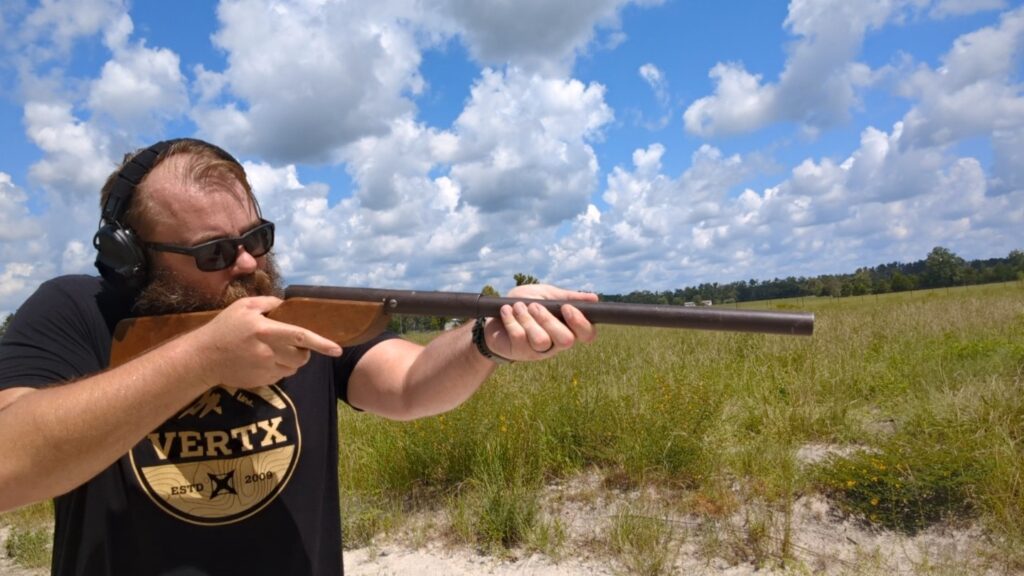
The simple slam-fire design is reliable. Give it a good tug, and the gun fires every time. There is no action to cycle, no pump, no gas systems, no levers, just a little pull and a bang. Removing the barrel and reloading can be quick if the shell isn’t expanded too much.
You can plop it out and shoot. Sometimes the plastic shell expands a bit more and requires a punch rod and/or pocket knife to get the shell out. If I were a Filipino guerrilla, I’d likely fire one round, and either retreat or charge with another weapon. Trying to reload the gun quickly wouldn’t be easy in a fight.
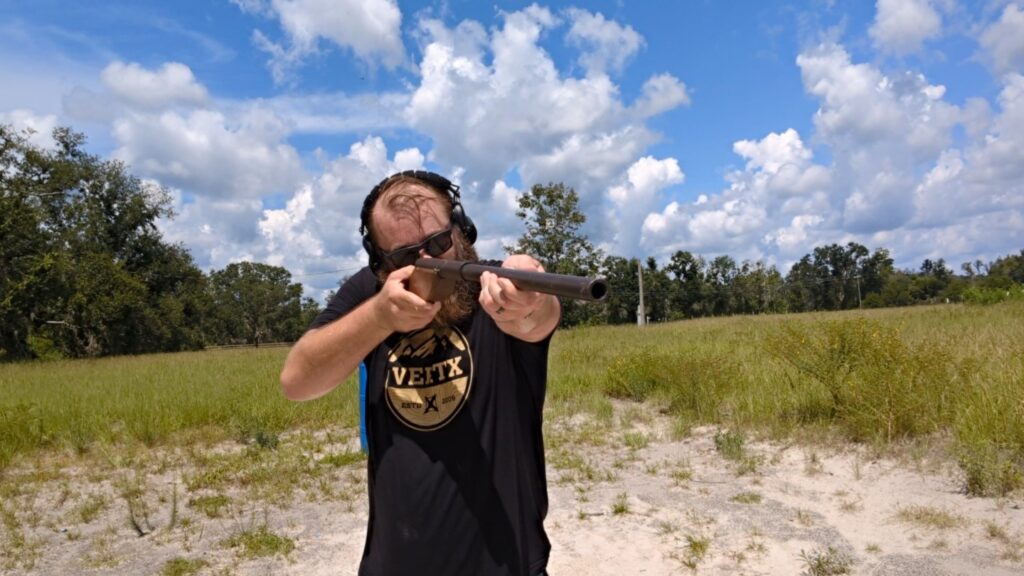
Every round fired is an experience, and it’s a fair bit of fun. I spent about a hundred bucks on this thing, and I’ve gotten a dollar’s worth of enjoyment. To be fair, the most enjoyment I’ve derived from this gun has been learning about Illiff Richardson and reading American Guerrilla. The fact that he made a shotgun based on his experience is just icing on the cake.
Read the full article here



